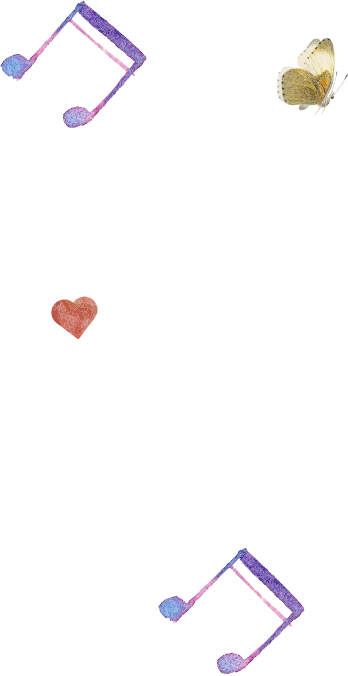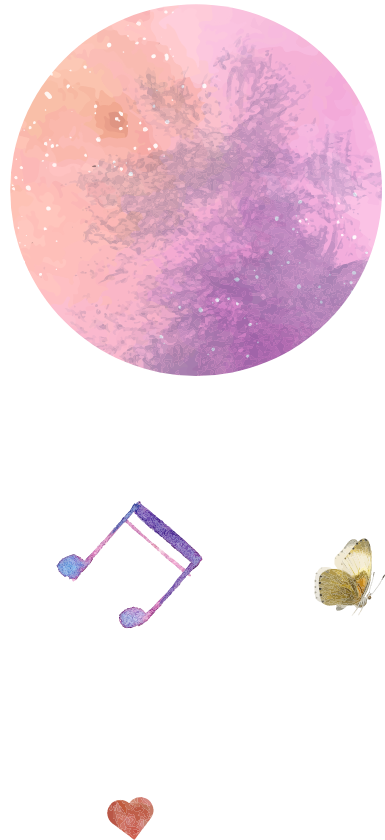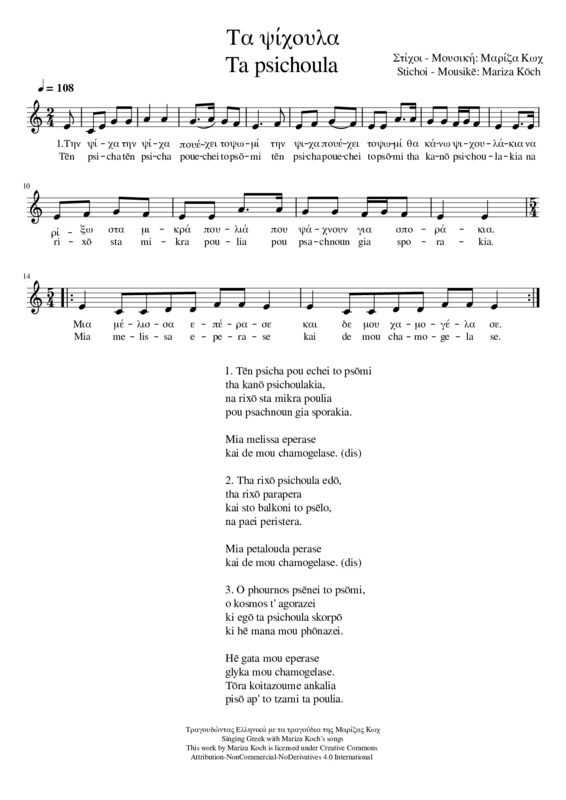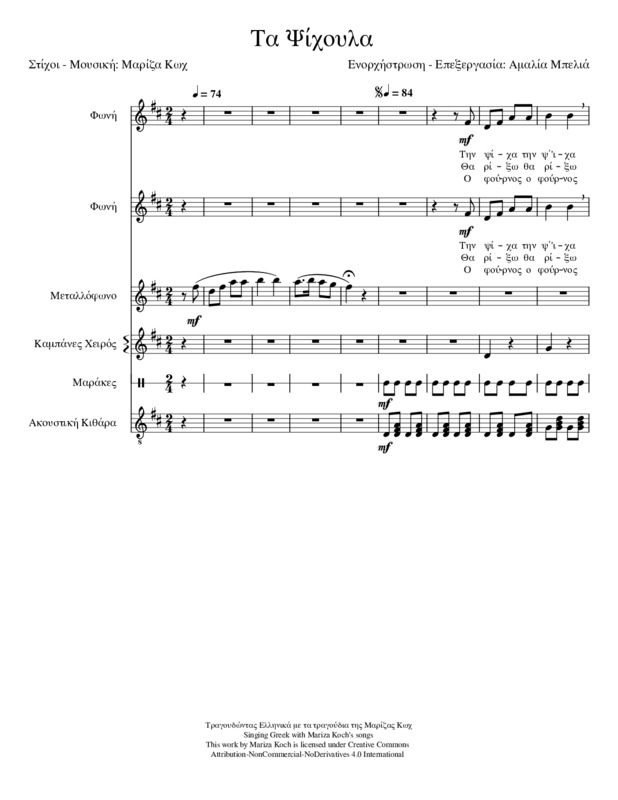
Ta psichoula

Ta psichoula
Pronunciation
Articulation of the double consonants /ψ/ (ps) and /ξ/ (x) and their use in the Greek language. Practice with the words of the song that contain /ps/ [ψίχα (psicha, crumb), ψωμί (psōmi, bread), ψάχνουν (psachnoun, they are looking for), ψηλός (psēlos, tall), ψιχουλάκια (psichoulakia, bread crumbs), ψήνει (psēnei, he bakes)] και /ξ/ (x) (ρίξω) (rixō, throw).
Analyze the double consonants /ξ/ (x) in (κ+σ) (k+ s) and /ψ/ (ps) in (π + σ) (p+s).
Analyze the double consonants /ξ/ (x) in (κ+σ) (k+ s) and /ψ/ (ps) in (π + σ) (p+s).
Speech Comprehension and Production
Identify the diminutives in –άκι (-aki), -άκια (-akia), -ούλα (-oula) in the lyrics of the song (crumbs, seeds). Refer to other endings of diminutives (-ίτσα,-ούλα) (-itsa, -oula). Practice the creation of diminutives with other words of the song [μέλισσα-μελισσούλα (melissa-melissoula, bee), γάτα-γατούλα (gata-gatoula, cat), πεταλούδα-πεταλουδίτσα (petalouda-petalouditsa, butterfly), πουλιά-πουλάκια (poulia-poulakia, birds), etc.].
Figure of speech: personification of animals (η μέλισσα και η πεταλούδα χαμογέλασαν, η γάτα δεν χαμογέλασε) (ē melissa kai ē petalouda chamogelasan, ē gata den chamogelase).
Narrative understanding of the song: why don't the bee and the butterfly smile when the birds come? Because the birds feed on insects and they are afraid of being eaten. Why does the cat rejoice when it sees the birds? Because she wants to eat them itself. Why does the child's mother cry when the child spread the crumbs on the balcony?
The pattern "... επέρασε και μου/δε μου χαμογέλασε" (eperase kai mou/de mou chamogelase) is also found in the Greek folk songs.
Figure of speech: personification of animals (η μέλισσα και η πεταλούδα χαμογέλασαν, η γάτα δεν χαμογέλασε) (ē melissa kai ē petalouda chamogelasan, ē gata den chamogelase).
Narrative understanding of the song: why don't the bee and the butterfly smile when the birds come? Because the birds feed on insects and they are afraid of being eaten. Why does the cat rejoice when it sees the birds? Because she wants to eat them itself. Why does the child's mother cry when the child spread the crumbs on the balcony?
The pattern "... επέρασε και μου/δε μου χαμογέλασε" (eperase kai mou/de mou chamogelase) is also found in the Greek folk songs.
Music Activities
Learn the song using mimetic movements.
Distribution of roles and dramatization of the song (child, birds, bee, butterfly, cat, mother).
Creation of sound images of the episodes of the song, dramatized performance of the sound story without song.
Instrumentation of the song using melodic percussion (glockenspiel, xylophones, pitched tube, chime bars, etc.) by ear.
Understanding the alternation of the rhythm of the song in the refrain from 2/4 to 5/4 with rhythmic beats (on percussion instrument or body percussion).
The pupils choose various words from the text (e.g. crumbs, cat, butterfly, bee, pigeon), and create rhythmic patterns as they recite the words (e.g. crumbs, bee: three-eighths, cat: two-eighths). Practice in music writing and reading noting down the rhythmic patterns that are created by the pupils.
Distribution of roles and dramatization of the song (child, birds, bee, butterfly, cat, mother).
Creation of sound images of the episodes of the song, dramatized performance of the sound story without song.
Instrumentation of the song using melodic percussion (glockenspiel, xylophones, pitched tube, chime bars, etc.) by ear.
Understanding the alternation of the rhythm of the song in the refrain from 2/4 to 5/4 with rhythmic beats (on percussion instrument or body percussion).
The pupils choose various words from the text (e.g. crumbs, cat, butterfly, bee, pigeon), and create rhythmic patterns as they recite the words (e.g. crumbs, bee: three-eighths, cat: two-eighths). Practice in music writing and reading noting down the rhythmic patterns that are created by the pupils.
Cross-thematic Connections - Greek Culture
Interdisciplinary concepts: system, balance.
Development of ecological and animal awareness for the protection of birds. Why do we throw crumbs and not big pieces of bread at the birds? (to feed more birds and to make sure they will not quarrel with each other).
Understanding the ecological chain: the cat feeds on birds, birds feed on bees, butterflies and other insects.
How bread is made: reference to the ingredients, the types of breads and the ways of their preparation. Make bread in class.
The oven as part of house life from the antiquity until today (visual material).
Development of ecological and animal awareness for the protection of birds. Why do we throw crumbs and not big pieces of bread at the birds? (to feed more birds and to make sure they will not quarrel with each other).
Understanding the ecological chain: the cat feeds on birds, birds feed on bees, butterflies and other insects.
How bread is made: reference to the ingredients, the types of breads and the ways of their preparation. Make bread in class.
The oven as part of house life from the antiquity until today (visual material).
Age level
3-7 years old
Language level
Beginner
Nutrition
Animals
Unpublished






